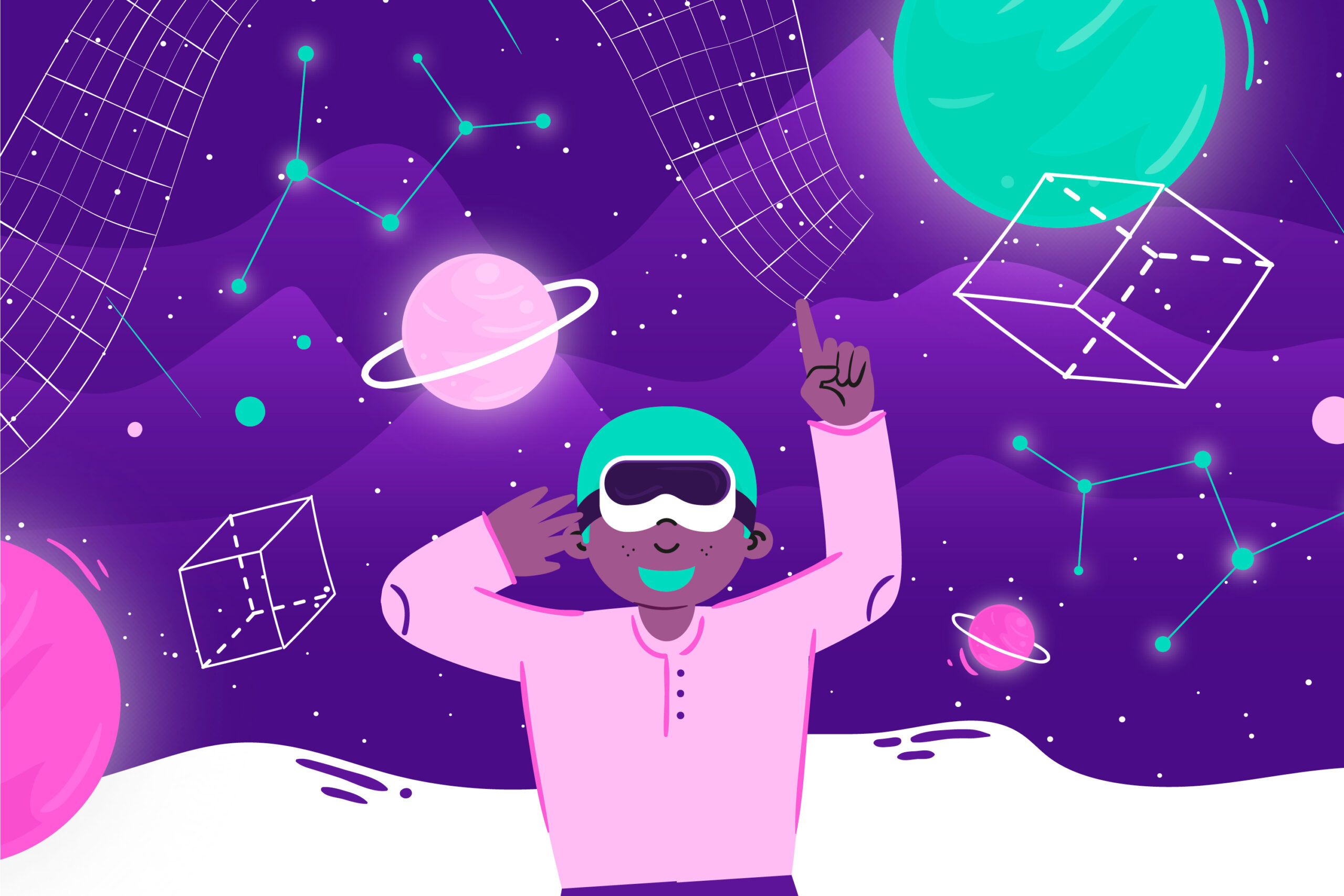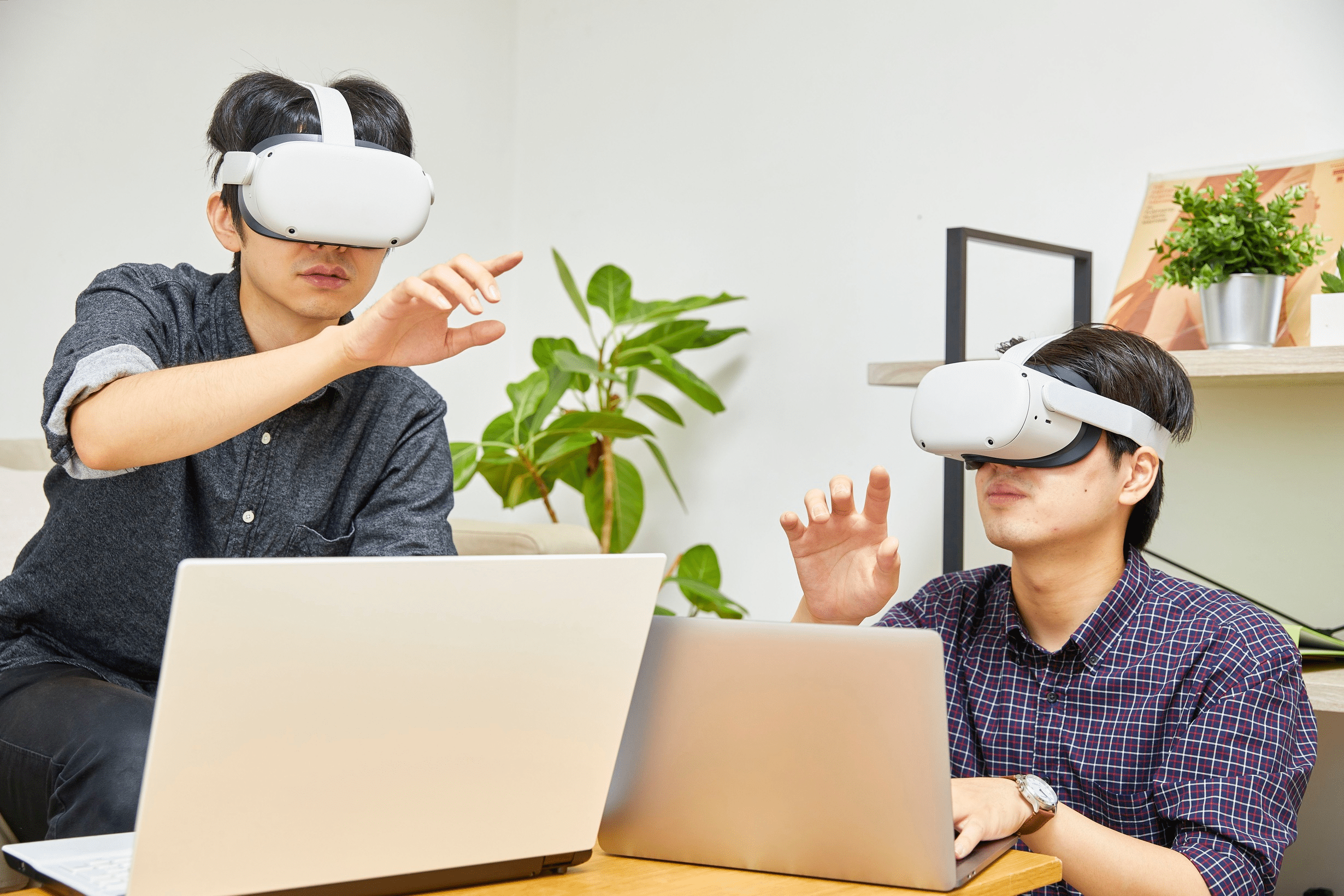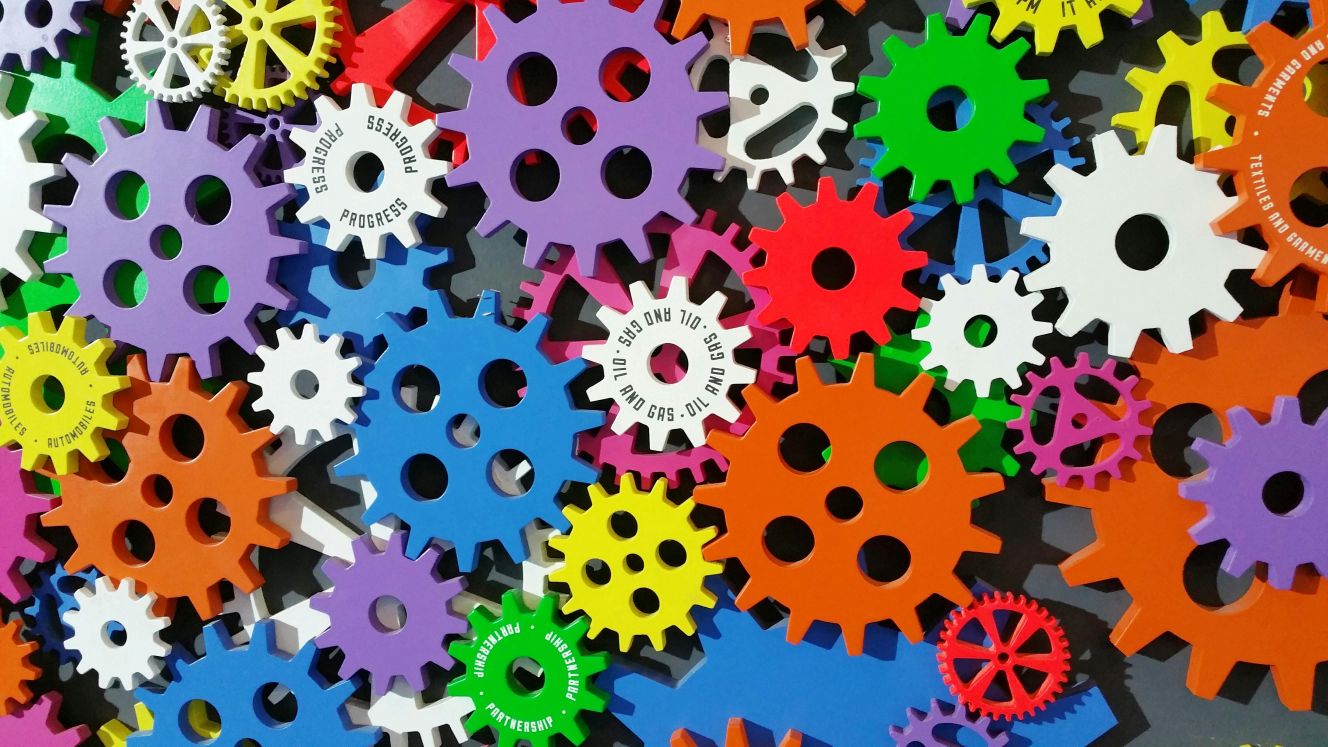
Boost Student Engagement and Ignite Real Curiosity With Immersive Learning
How can students travel through space, explore ancient civilizations, or construct mythological islands without ever leaving the classroom?
Virtual reality (VR) technology used to be limited to gaming and entertainment. Today, educators see its potential to revitalize the modern classroom. Why? Because when students have an immersive experience that transcends traditional learning methods, they enter environments and interact with concepts in unimaginable ways.
According to Frontiers in Psychology, "The use of VR in the classroom is expected to improve student engagement and learning outcomes…such learning experiences enable students to explore knowledge in deeper and more varied ways." This claim highlights the growing recognition of VR's power in the classroom.
Virtual reality is not a novelty. It’s not simply a form of entertainment or for fun (even though, to students, it is). It's a tool that educators can use to provide learning experiences that can't be replicated anywhere else. Using VR in the classroom can have a profound impact on student engagement and achievement because it…
- Transforms learning experiences,
- Ignites curiosity, and
- Shifts students' mindsets.

Virtual Reality in the Classroom: Shifting Students from Passive to Active Learners
It's no secret that teaching is difficult. Teaching in today’s classroom might be harder than ever. Common challenges in the traditional classroom include low student motivation, rigorous content, and a one-size-fits-all approach. While every teacher works towards personalized learning, when the ratio is 1:25 or worse, it too often remains a lofty, unattainable goal. These issues can make it hard to capture students' attention and spark their motivation. As a result, many students find themselves as passive consumers instead of active participants. It doesn’t have to be this way, not every day.
Virtual reality can reshape the way we get students interested in their learning. It shifts students from recipients of information to active agents of their education. How can VR do this? By increasing student engagement.
Engagement refers to a state of intense focus, interest, and enjoyment in an activity. It's those moments where students bring the complete focus of their attention and energy to the assigned task. In those moments, students feel
- Challenged,
- Motivated, and
- Captivated!
That's the sweet spot - where students shift from passive to active learners. From slumped in their seats to heads up, shoulders back. Literally, the posture of learning changes when students are meaningfully engaged.
VR education allows students to interact with content and information in ways that were previously inaccessible. They're no longer limited to the four walls of the classroom. Because of this, VR serves as a tool to get students into an active state of engagement, which allows them to demonstrate their complete understanding of the content–more than any test or essay can show.
The Power of Immersive Learning Experiences
Immersive learning uses virtual environments to create interactive and engaging experiences. Through VR, students can transcend geographical boundaries and time constraints. They're transported to different places, cultures, and times.
Deidre Roemer, Director of Leadership and Learning at West Allis-West Milwaukee School District, shared, "Immersive learning is a way to bring the world to students who may not have other avenues to see it."
From virtual field trips to building real-time science experiments, VR enables students to engage with complex concepts in ways that stimulate their curiosity and deepen their understanding. Students who participate in these activities are actively involved in their learning process. This level of engagement helps them
- develop their critical thinking skills,
- retain more information, and
- comprehend complex concepts.
All of this leads to greater academic success.
And isn’t the goal always centered on improving student outcomes? By facilitating learning opportunities that empower students to become creators rather than consumers of content, they’re now in the driver’s seat. This kind of agency increases student engagement and excitement for learning. VR technology allows students to explore, experiment, and create.
Does Making Learning Fun Result in Greater Student Success?
We can all agree learning isn't just about absorbing information. Students should feel invested in the content, but for many students, learning stops being fun and starts becoming a chore. We all know that when we're actively involved in our learning, education becomes more than just facts and figures. It becomes a relevant experience that ignites our passion for learning more and learning again.
Virtual reality has the ability to make us active participants in what we are learning. It transforms abstract concepts into tangible experiences we can see, hear, and interact with. VR takes learners into the content in a way that nothing else can replicate.
Let's say a vocabulary quiz is coming up in your French class. Traditional methods of studying include flashcards, matching, and drilling the terms into your memory. These can help students make it through the quiz, but what helps them make use of French for life? With VR, you can create an interactive environment where you can touch various objects to hear their names in English and French. Not only will they ace assignments and quizzes, they will have a deeply embedded skill, and the confidence to use it.
It's not just about having fun. Enjoyment plays a crucial role in learning outcomes. When students are deeply engaged in their learning, it activates the brain's reward centers and creates a sensation of joy. In this state, learning becomes enjoyable, leading to greater retention and growth. Full engagement encourages students to seek challenges at the edge of their ability level and sparks improvement and personal expansion.

Use VR to Foster Curiosity and Creativity in the Classroom
Teachers love nothing more than sparking the curiosity of students to ask questions, explore implications, and seek answers. Curiosity comes naturally to some, less so to many. And no matter how dynamic a slide deck may be, creating curiosity is no easy feat. With VR, though, curiosity starts before students even begin engaging content. Students will take a headset and turn it around in their hands and wonder if it’s the right fit - both literally and figuratively. Simply the act of preparing to learn can be a curious thing, which is why VR helps foster a sense of curiosity that shines brightly in even the most reluctant of students.
In virtual reality environments, students are encouraged to investigate, make discoveries, and seek answers independently. This high level of engagement means that students become curious about learning and more interested in the content. As a result, they process the information at higher levels and can produce higher-quality work.
But what does this look like in action? Let's explore some examples of what students can create when they take ownership of their education:
VR Portfolio
Sharni Marcus created a completely immersive VR portfolio. The experience taught her "how to turn abstract ideas into complete projects and how to find creative solutions to complex problems."
Winterolymp
Winterolymp is an augmented reality application that invites you to explore the history of the beautiful Corviglia region in the Swiss Alps.
Legend of Kami
Inspired by different cultures and mythologies, the Legend of Kami is a multi-player, collaborative exploration of a fictional Ancient World.
VR for Differentiated Instruction: How to Meet Students at Their Level
In every classroom, students bring unique learning styles, abilities, and needs. This challenges every educator to provide tailored instruction that meets students where they are. The challenge, of course, is when this means meeting students at the front of the class, heads up and eyes on while also meeting students hiding in the back, shoulders slumped and avoiding eye contact.
With the right use of VR in the classroom, teachers can not only meet students where they are, it can invite them into new spaces and places they never imagined, making the real classroom an inviting and safe place for all learners of just about all abilities.
Virtual reality offers a versatile platform for differentiated instruction. This allows educators to craft personalized learning experiences to individual students' needs. Whether a student learns best through visual, auditory, or kinesthetic methods, VR can provide immersive experiences that cater to their preferred style.
VR is a promising tool for students with learning disabilities. It can provide personalized and adaptive learning environments that help students improve their cognitive engagement and academic performance. Virtual reality can also assist students with emotional disorders or disabilities. By immersing students in virtual contexts that simulate real-world scenarios, VR can teach them valuable skills for communicating with others and managing their responses in a safe and controlled environment.
One of VR's most powerful aspects is its ability to level the playing field and provide equal access to educational resources for all students. Regardless of geographic location, socioeconomic status, or physical ability, VR offers opportunities for experiences that transcend these barriers.
Through virtual reality, students from diverse backgrounds and differing abilities can access the same learning opportunities and have a more equitable educational experience.
Empower Learners and Change Student Mindsets With Virtual Reality
VR is moving past the stage of being an interesting, if distracting, side trip on the teaching and learning journey and quickly becoming recognized as a transformative experience for how students learn and think. By immersing them in interactive and engaging virtual environments, VR has the power to shape their mindsets.
One key way VR influences student mindsets is by encouraging active participation over passive consumption. Instead of trying to absorb information from textbooks or lectures, students in VR experience hands-on exploration and interaction. VR promotes experimentation and fosters creativity by providing students with a platform to explore, innovate, and create.
Programs like Zoe allow students to design and build their virtual experiences without coding skills. This empowers students to think outside the box and express their creativity. It enriches their problem-solving skills and supports a growth mindset where students embrace challenges and see failures as opportunities.
How Bayha Group Transformed Young Summer Interns Into "Metaverse Architects" Using Zoe
The Bayha Group, a California-based organization dedicated to providing equal opportunities for low-income youth, used Zoe to offer an internship program called "WorkWonder."
During the internship, students were tasked with creating innovative VR experiences, including training simulations for people with food allergies and virtual restaurants where customers could order food in a digital setting. Through collaboration and experimentation, students were able to
- tackle challenges,
- share ideas, and
- leverage their skills to bring their projects to life.
Using Zoe, the students built prototypes quickly and tested their ideas. This allowed the students to deliver results efficiently and refine their projects in real time, leading to more successful and impactful experiences. By working with VR technology, students gained practical experience and improved their skills in a real-world setting.
Spark Curiosity and Joy in Your Classrooms with Zoe VR
Virtual reality isn't just a tech innovation - it's the gateway to a more inviting, engaging, and transformative educational experience. It breaks down the limitations of the traditional classroom and opens doors to immersive learning opportunities for all students.
At Zoe, we believe in simplifying the leap. With our platform, educators can deliver interactive VR experiences and activities in a fun and easy way. Students will be empowered to explore, create, and learn in ways that reignite curiosity and make learning enjoyable.
If you're ready to bring the power of VR into your classroom, contact us to discuss our K-12 solutions. Together, we can create environments where education, excitement, and exploration collide.


